Wooden sculptures
Wooden sculptures are unique objects. Sculptures depicting persons can be reliefs, busts or full sculptures. The oldest wooden sculptures in the museum’s collections are medieval sculptures depicting Catholic saints. Some of the medieval sculptures of saints were made in Finland, but many are from Central Europe. The sculptures tell about medieval internationalism and cultural connections, including here in Finland.
Medieval sculptures of saints were not only works of art, but they also conveyed Christian traditions and stories. At the same time, sculptures depicting saints brought art to ordinary people. They were colourful and decorated, unlike many everyday objects belonging to ordinary people. The sculptures usually contain a detail that associates them with a particular saint or story about a saint. In this way, the saints and the related Christian teachings and stories became familiar to churchgoers.
The museum’s collections also include other wooden sculptures related to faith and beliefs. Some of the objects involve stories recorded about the power of the holy object and its impact on people’s lives. There are also objects we know nothing about, and we can only speculate as to the significance they have for their makers. Wood has been used as a material to depict holy figures for thousands of years.
Select an image for more information
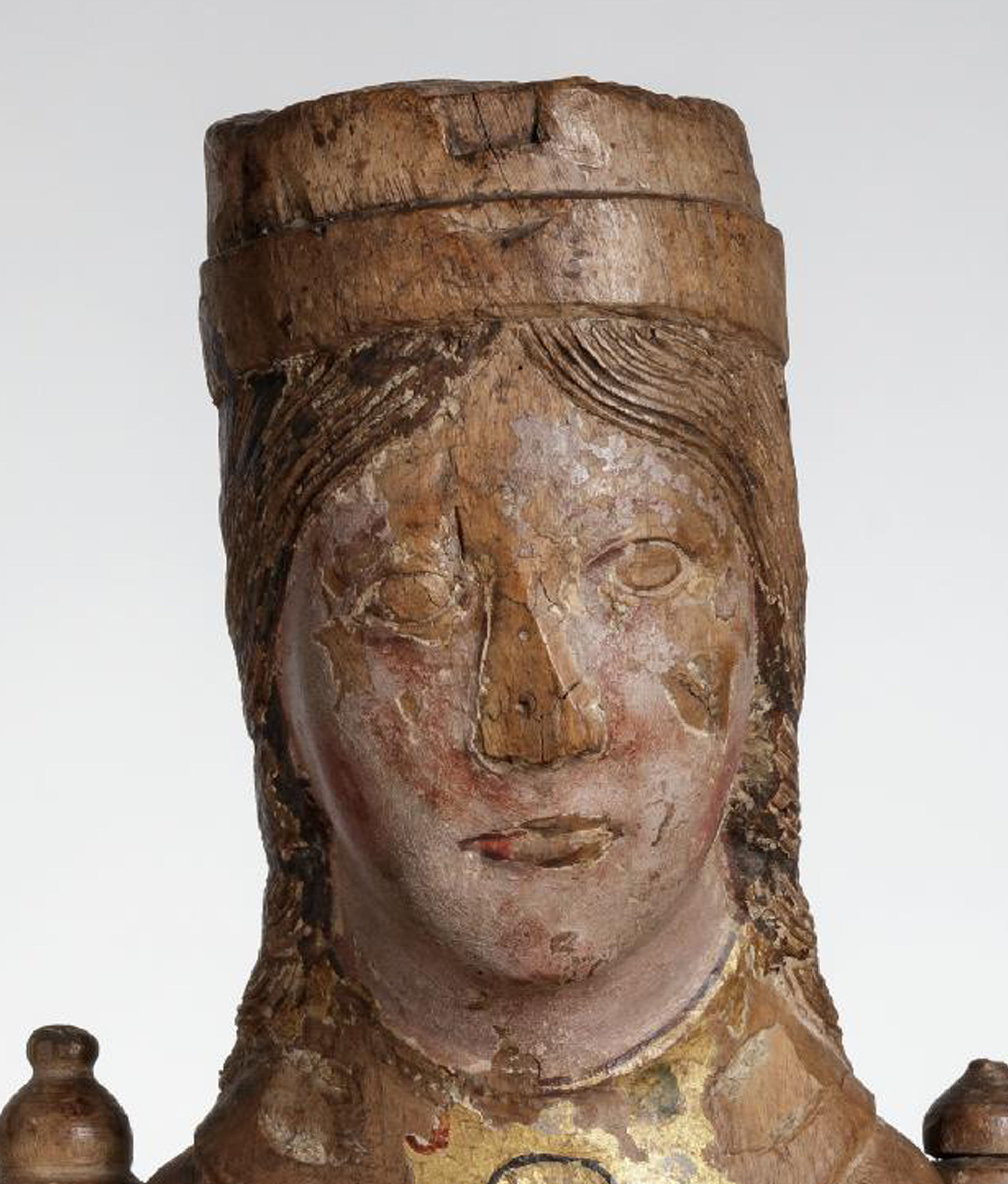
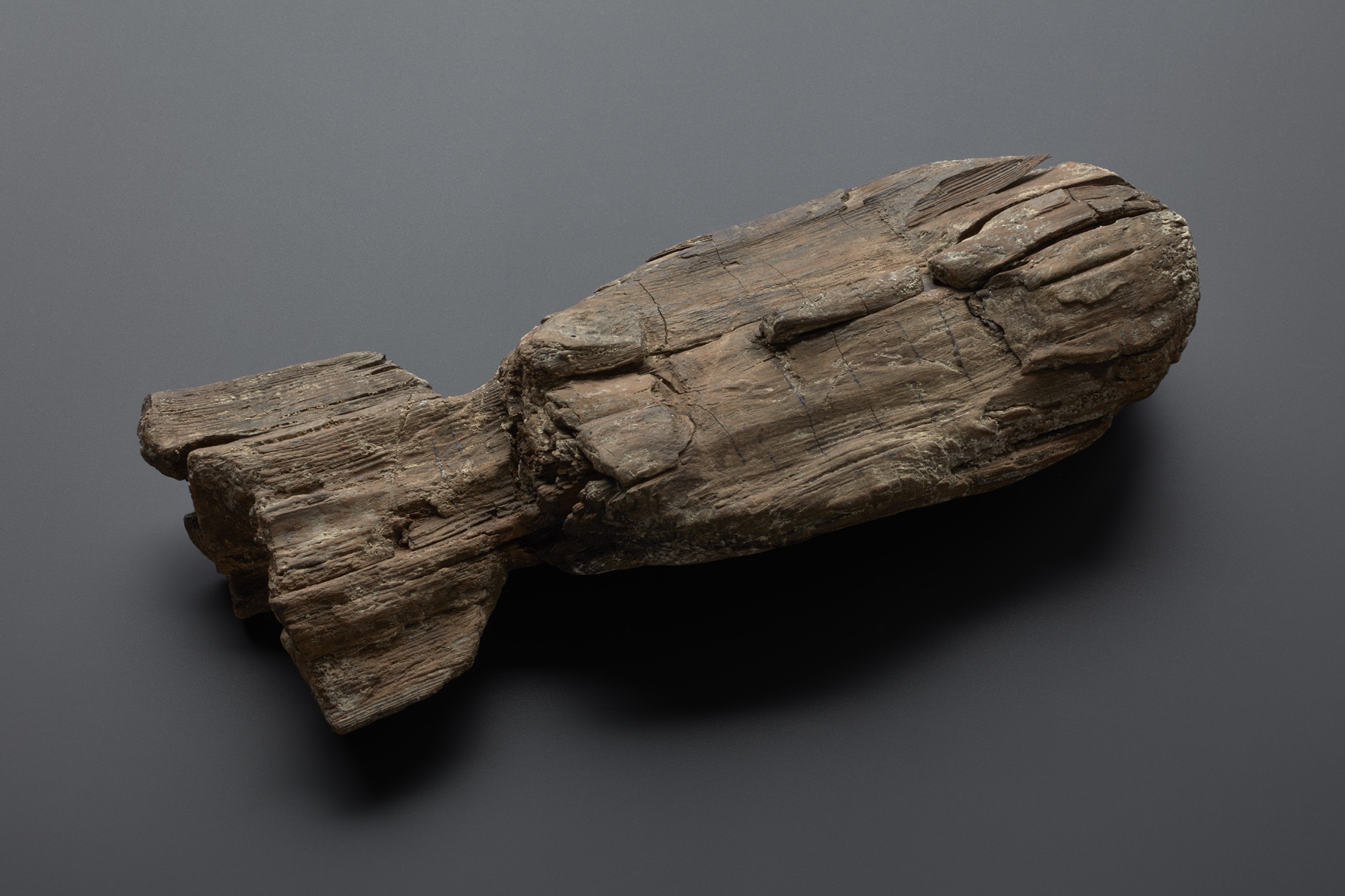
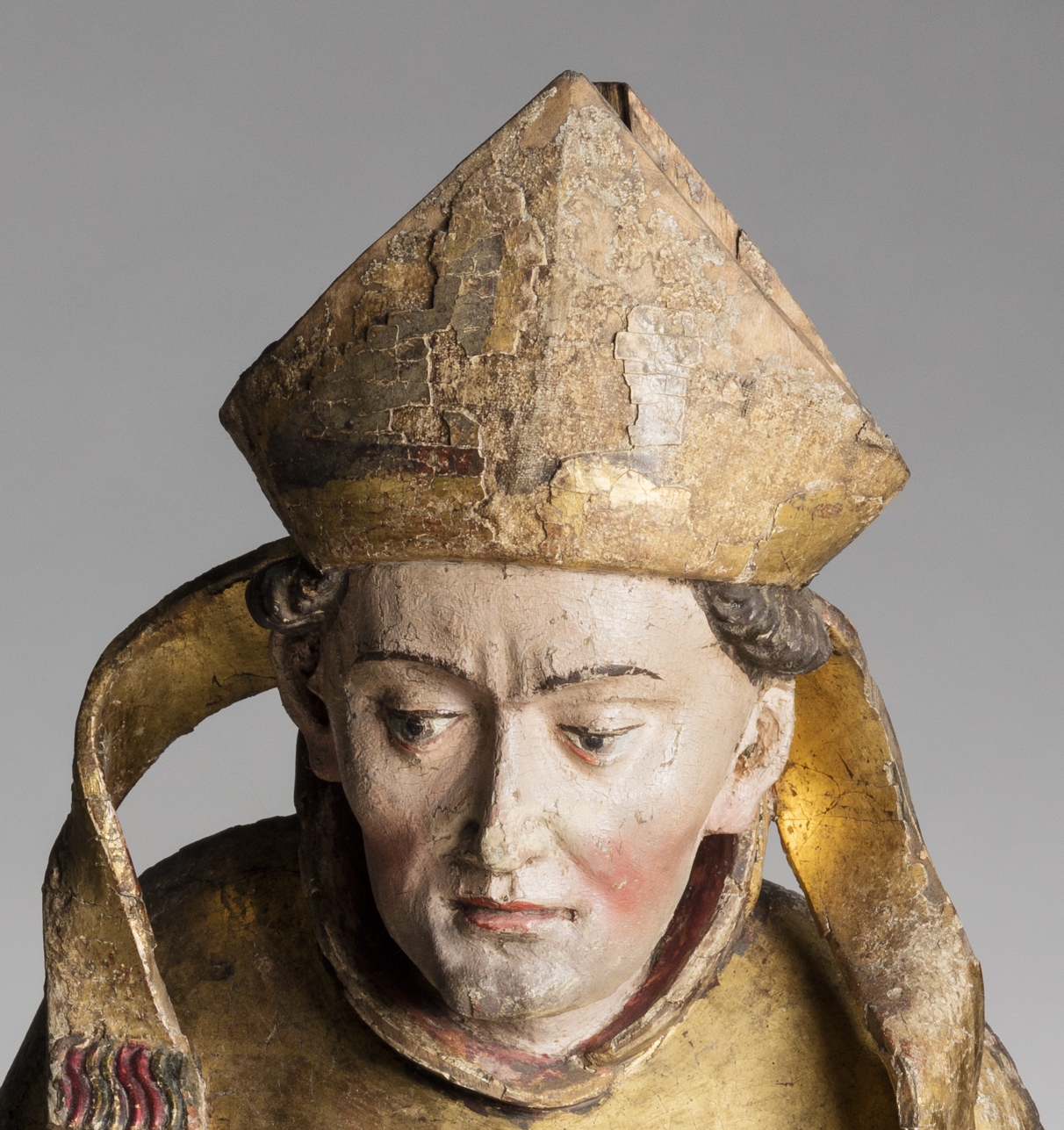

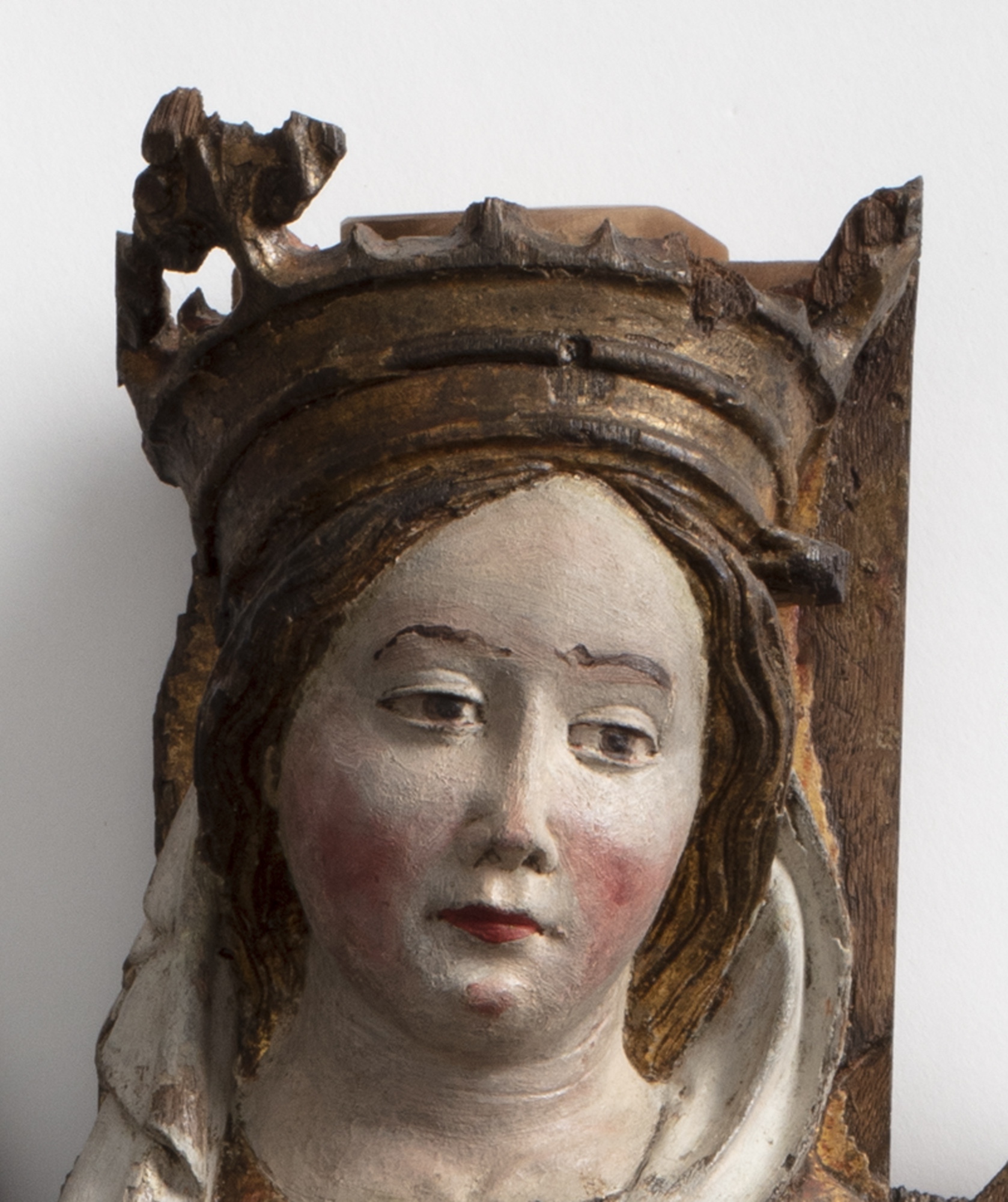

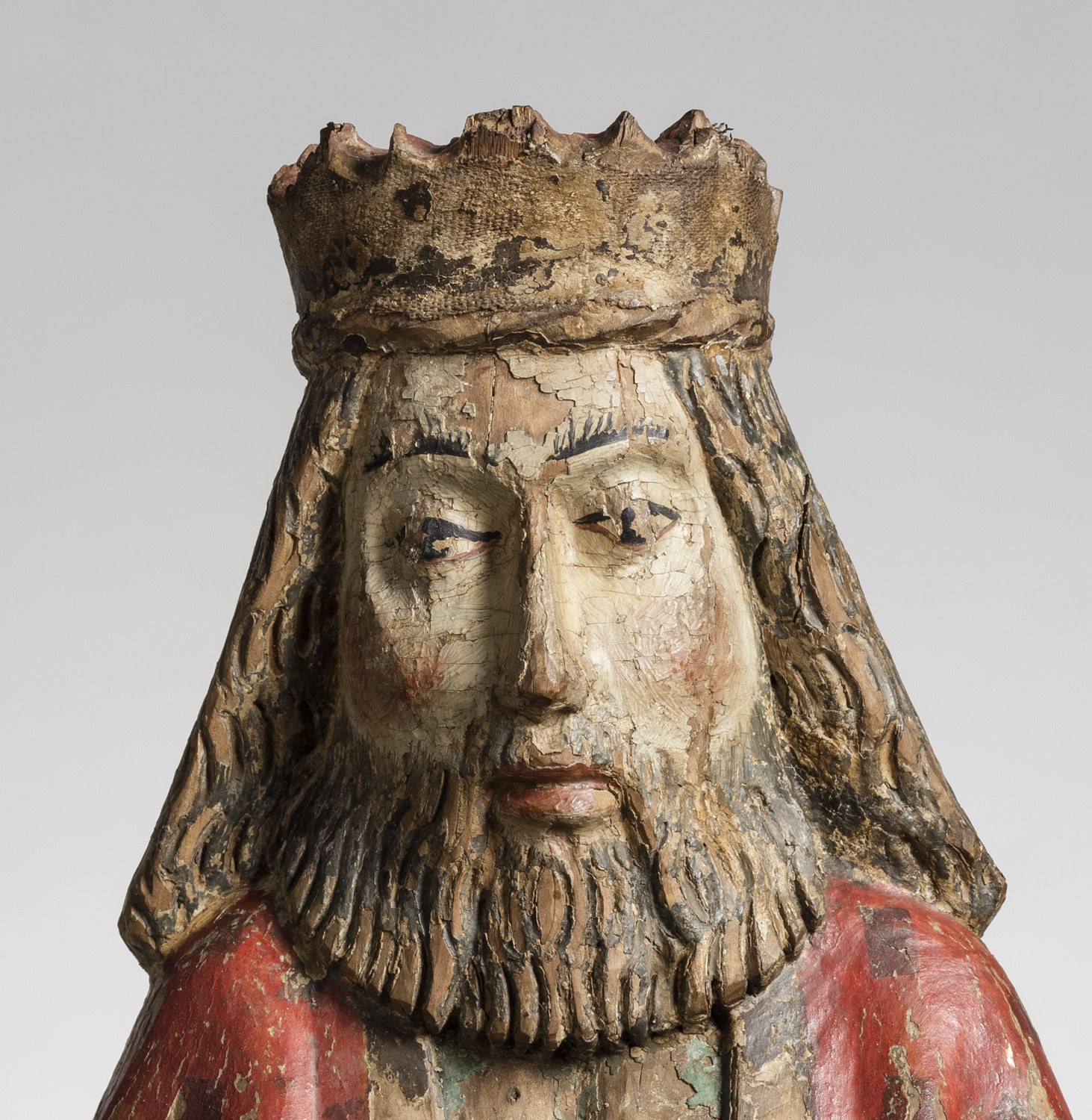
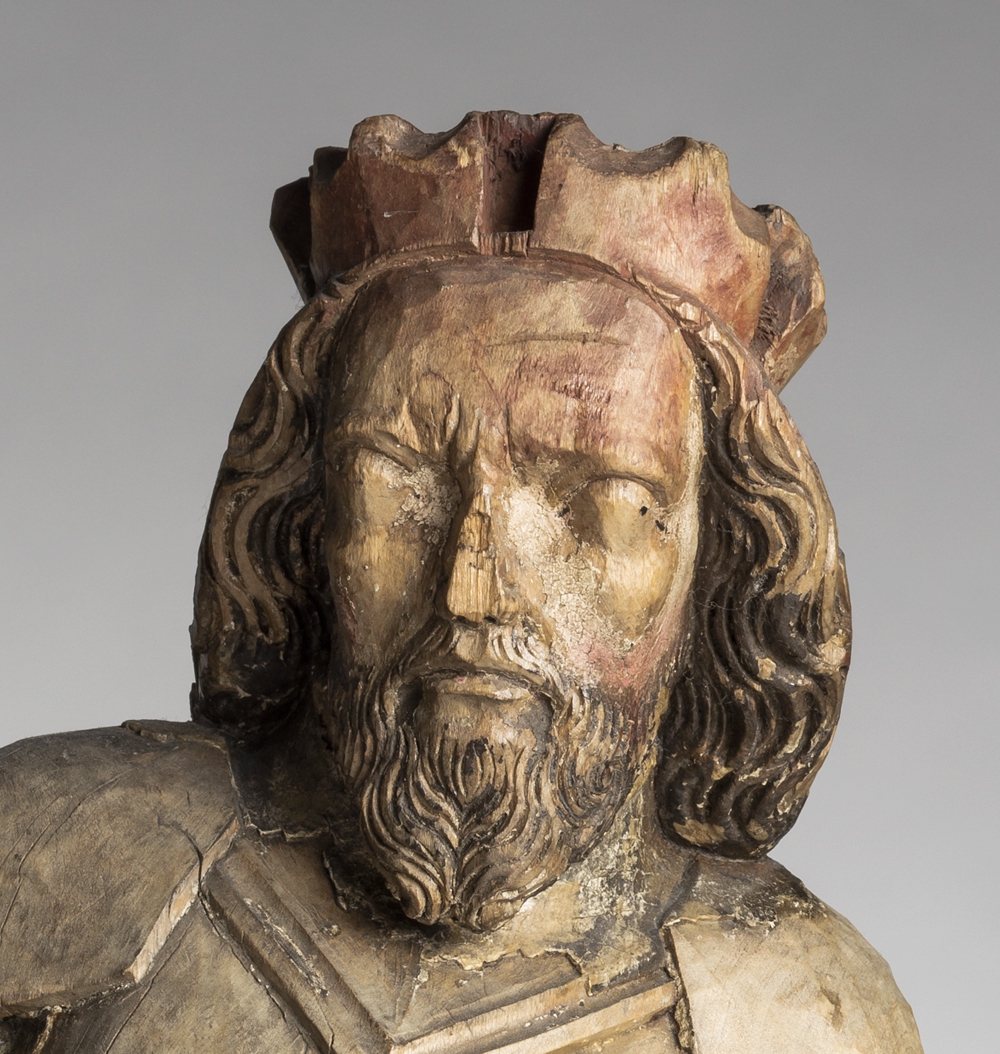
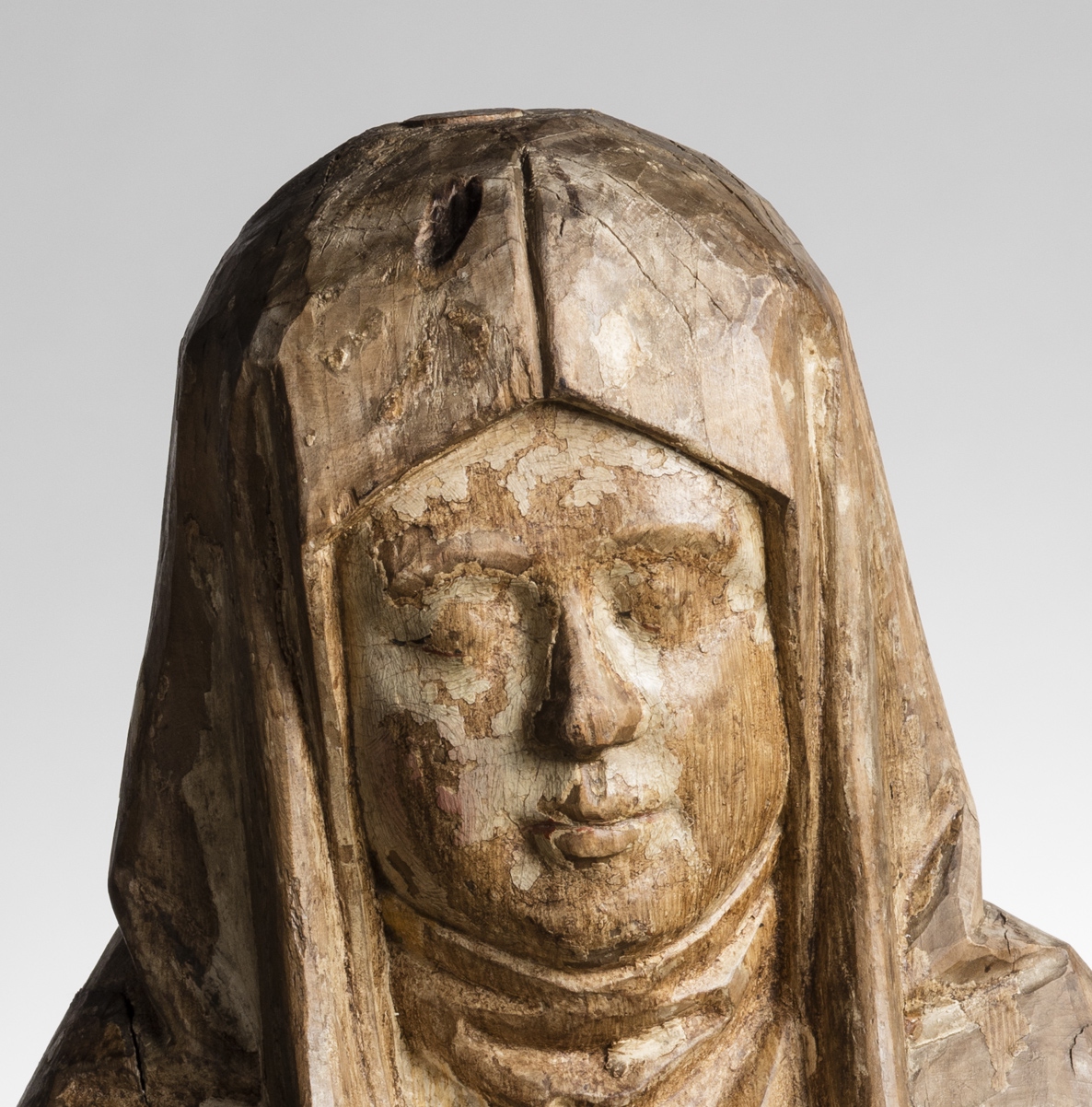
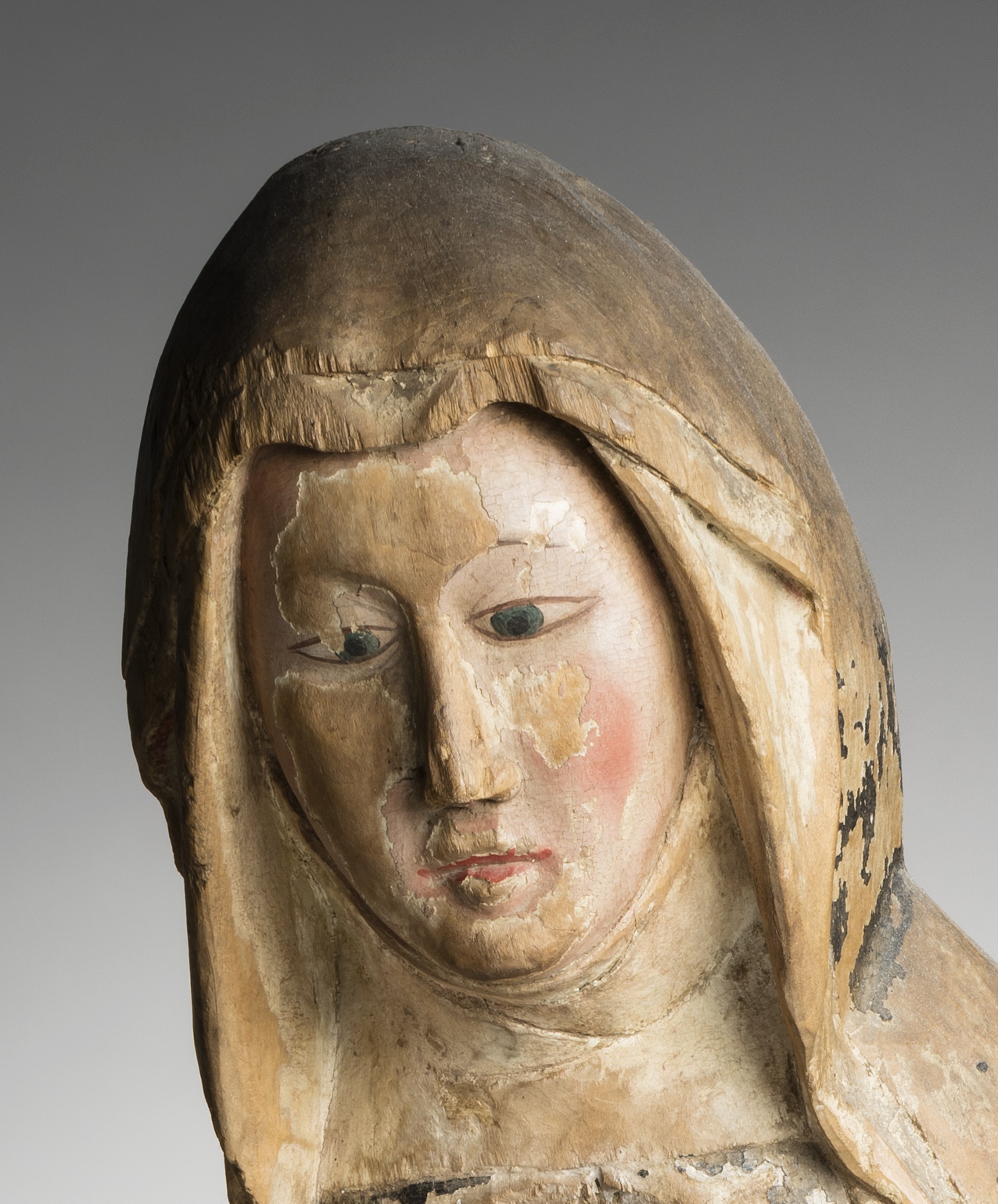
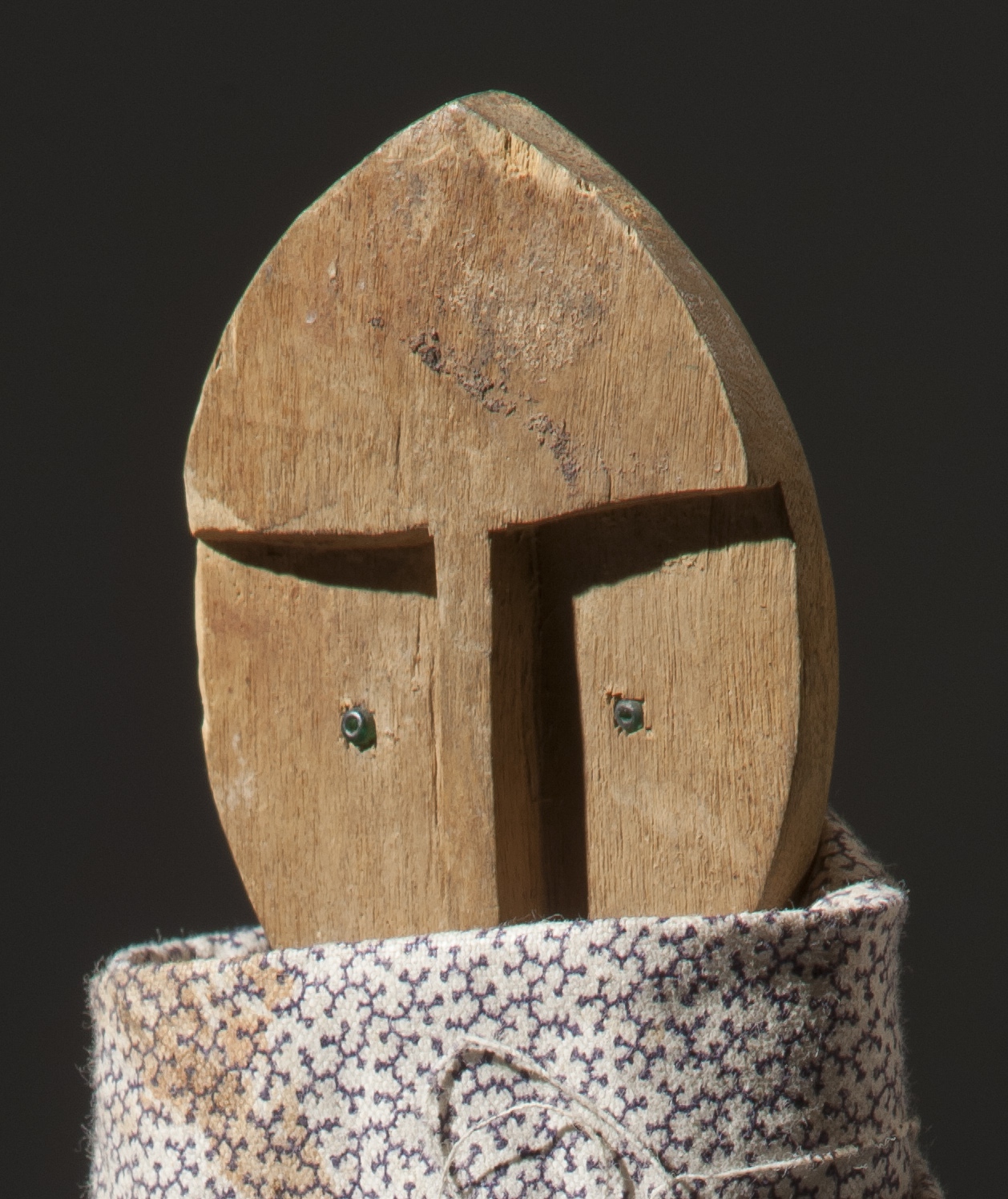

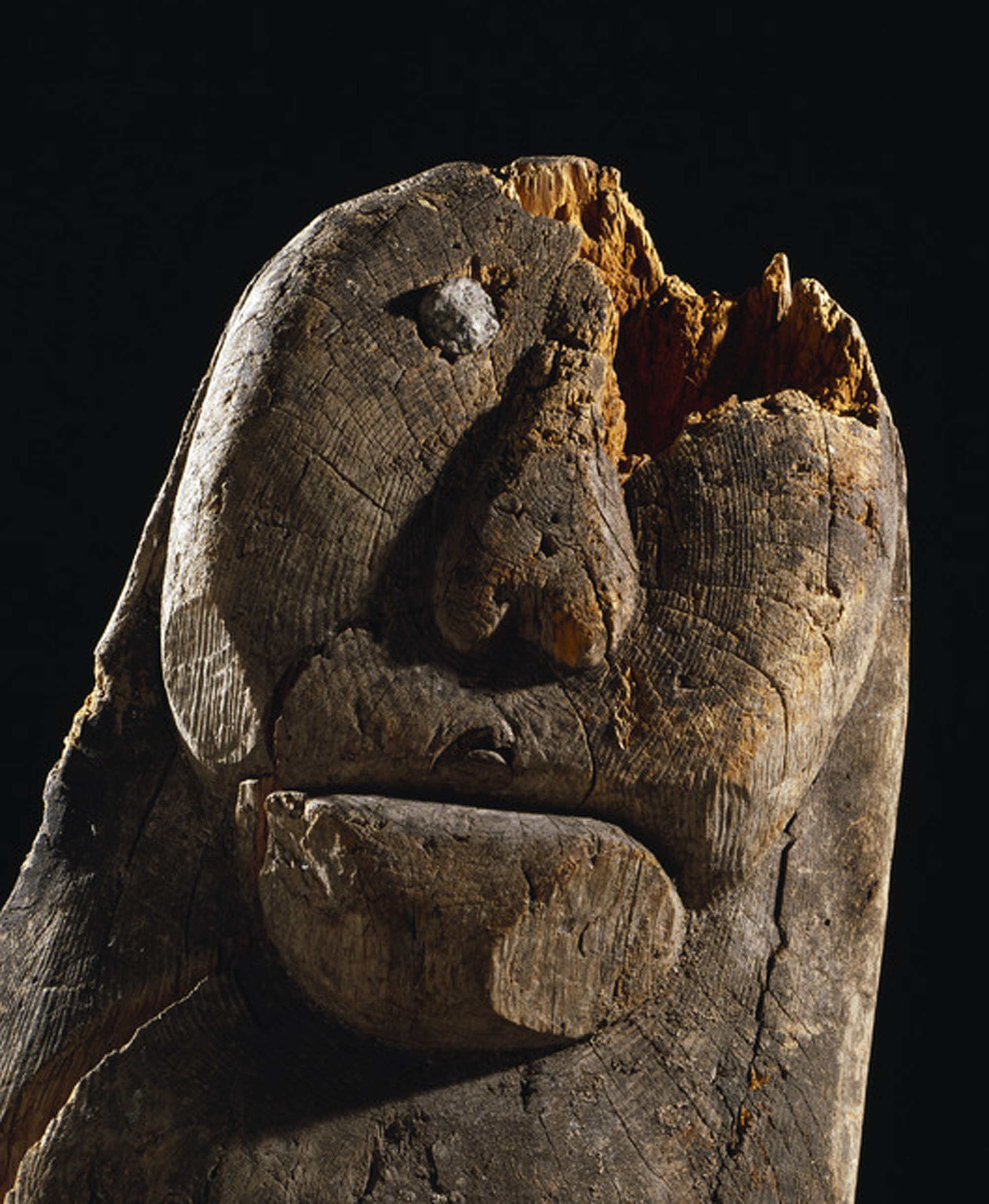
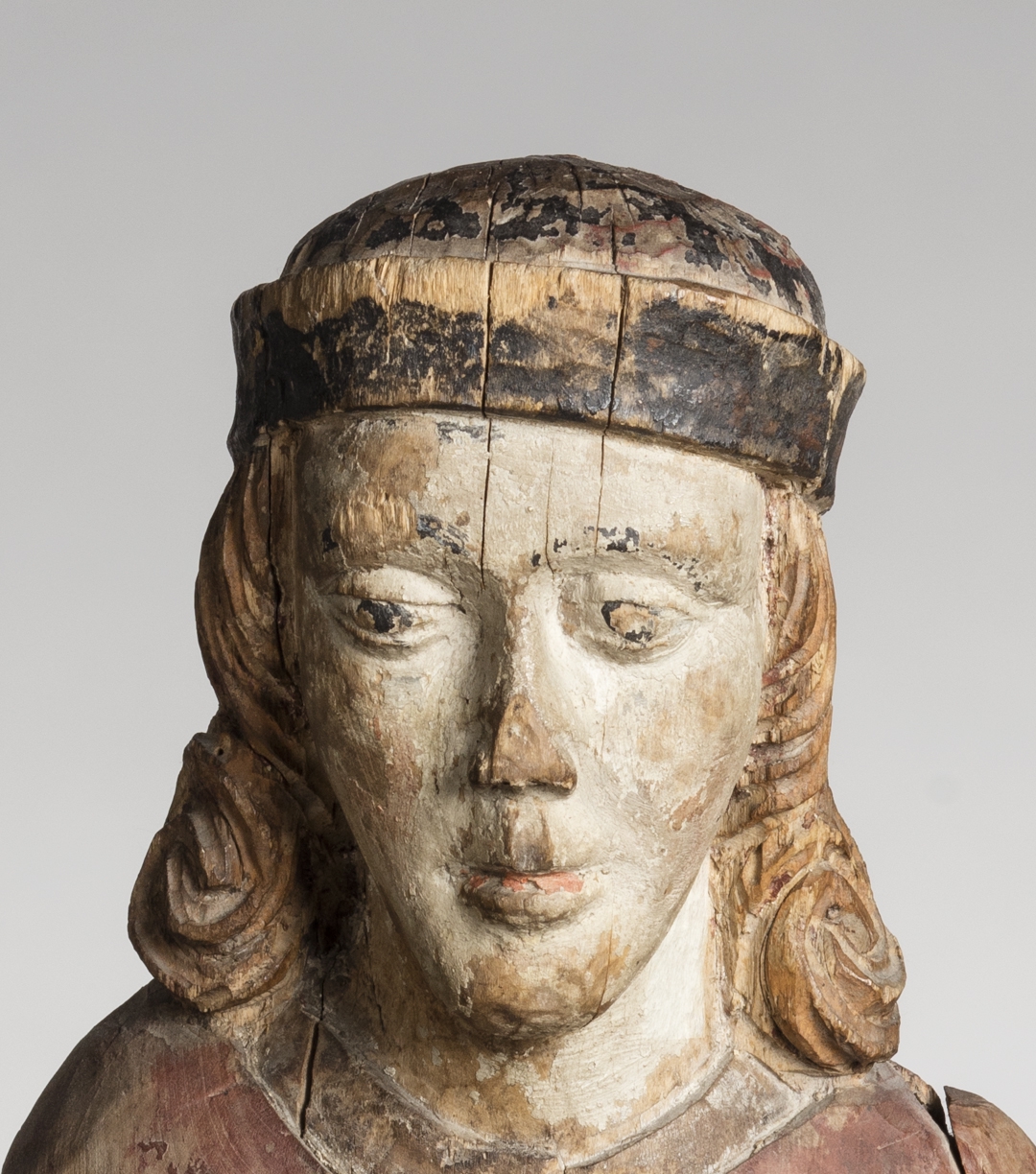
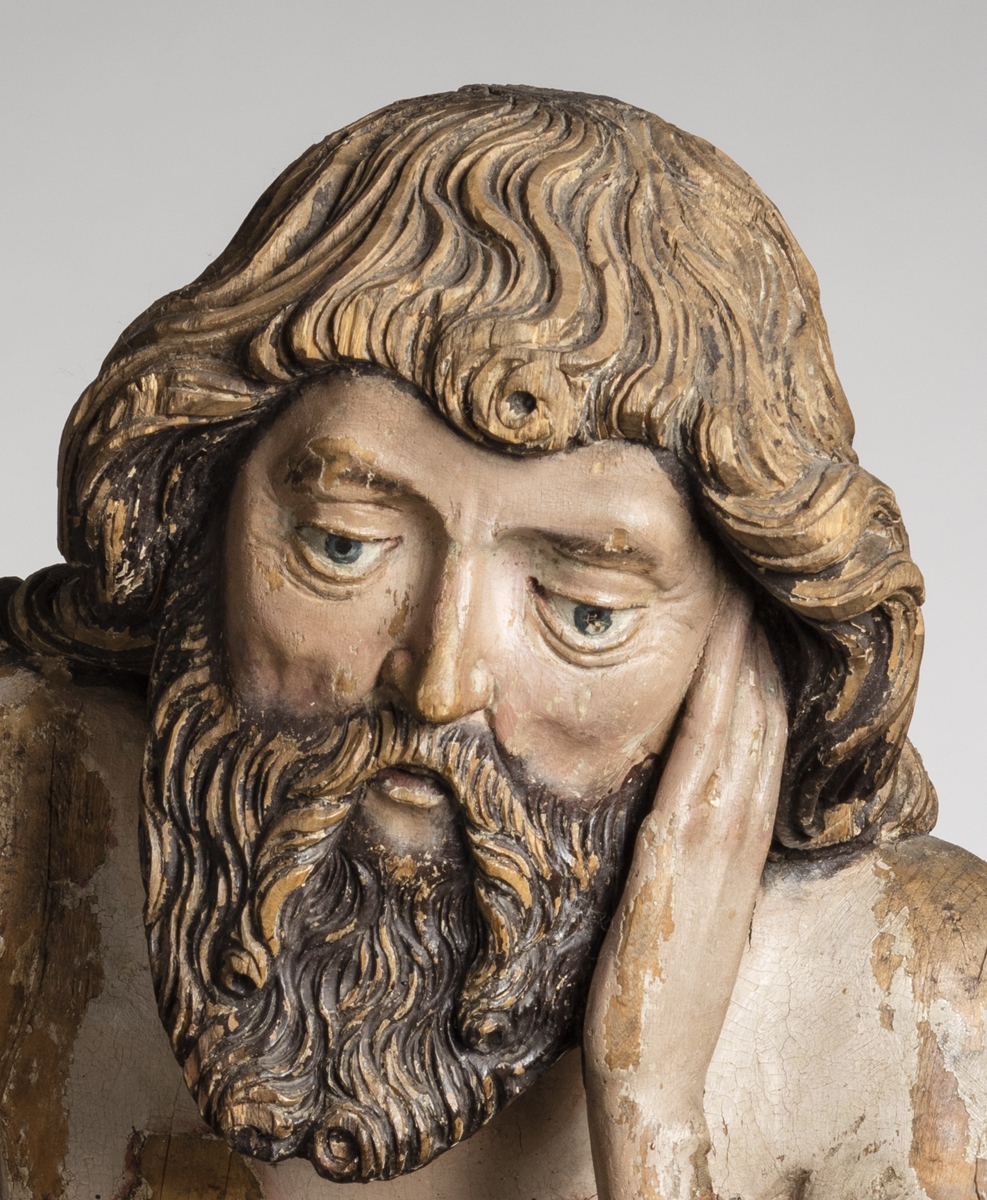
Madonna of Korppoo
Wooden god
Saint Henry and Lalli
John the Baptist
Woman of the Apocalypse
Archangel Michael
God the Father
Saint Olaf
The Virgin and Child with Saint Anne
Saint Birgitta
Spirit, Molngilni
Saint Nicholas
Stone-eyed god
Saint Martin
Job

Madonna of Korppoo
The statue of Virgin Mary and the Child from Korppoo Church is the oldest sculpture of saints preserved in Finland. It was manufactured in the Cologne region around the year 1200. Mary is sitting upright in a narrow chair, looking forward. The Infant Jesus used to be in Mary’s arms, fastened with two pins.
Mary’s face is oval and narrows to the chin. Her large, open eyes have been drawn with grooves. She has a straight mouth with thin lips. The hair is parted in the middle of the head and braided on both sides. The braids come down on the back. The upper part of the head is staggered for the crown, which has been lost.
The sculpture has been 3D modelled
H1744:1


Digital collection

Wooden god
This wooden sculpture of a human head was found during shore excavations in Pohjankuru, present-day Raasepori, in 1897. The object has been dated to the Neolithic Stone Age circa 4000–2000 BCE. The district engineer in charge of the excavation work donated the object to the Finnish Antiquarian Society. The object is narrow and flat, 24.5 cm high, 9.5 cm wide and 5.6 cm deep. The head has broken off under the shoulders. The transverse lines were created during the first conservation.
The object has been 3D modelled
KM 3481:1
Photo: Matti Kilponen



Digital collection

Saint Henry and Lalli
Saint Henry is the national saint of Finland. According to legend, the English-born Bishop Henry made the first crusade to Finland together with King Eric of Sweden. According to the story, a peasant named Lalli killed Bishop Henry on the ice of Lake Köyliö.
Henry, dressed in the bishop’s robes, is standing with his left foot on Lalli, who is lying in front of him. Lalli is lying on his stomach with his upper body lifted and his legs bent up at the knees. The sculpture was made in Lübeck around the year 1500 and placed in Akaa Church.
H453


Digital collection

John the Baptist
John the Baptist’s head is resting on a dish with the face straight ahead. The sculpture was used to cure headaches either by praying in front of it or by placing it on the aching head while saying a prayer. It has possibly also been used as a lid for a baptismal font. Made in Finland around the year 1500, the sculpture is from Pertteli Church.
H52105:1

Digital collection

Woman of the Apocalypse
The relief of the Woman of the Apocalypse has been skilfully sculpted. Madonna is standing on the crescent moon with her body heavily bent, carrying the Infant Jesus, who is playing with a pear across her lap. There is a mandorla behind her. At her feet, on both sides, there are small angels floating in the cloud. Below on the left there is a small Tiburtine Sibyl, pointing at the Madonna for a seated Caesar Augustus; on the right, the knight Gideon kneels with his sheepskin. Made in Tallinn around 1425, the relief is from Uusikaupunki Church.
H2013:1

Digital collection

Archangel Michael
Michael is standing on a dragon. He is holding a sword with a curved blade. Michael is the archangel of the Jews and Christians, and he fought the devil. The Finnish city of Mikkeli was named after Saint Michael, and several churches have been dedicated to him in Finland, in places like Honkilahti, Kirkkonummi, Keminmaa and Paimio. Made in Finland in the early 16th century, this sculpture is from Somero Church.
H1180:3


Digital collection

God the Father
God the Father is sitting looking straight ahead, holding a small crucifix in front of him. Christ is hanging on the cross, his head leaning to the right and his right hand lifted diagonally. Made in Finland around the year 1500, the sculpture is from Somero Church.
H1180:5


Digital collection

Saint Olaf
Saint Olaf was the most popular saint in Finland alongside the Virgin Mary in the 13th century. Olaf was a Viking king, the national saint of Norway and the patron saint of all knights and soldiers. He was also a popular saint who protected livestock and crops. Olavinlinna Castle was named after the warlike saint. Made in Northern Germany in the late 15th century, the sculpture is from Pälkäne Church.
H1183:1


Digital collection

The Virgin and Child with Saint Anne
Saint Anne was the mother of the Virgin Mary. She is not mentioned in the Bible, but the cult of Saint Anne was born in the Eastern Church as early as in the 2nd century. Anne was the most popular female saint in Finland in the 15th century, protecting against the plague, among other things. In folklore, Saint Anne was Annikki, the hostess of the forest, who was called to help with cattle. In the “Virgin and Child with Saint Anne” sculptures, Anne is depicted together with her daughter and the Infant Jesus. This sculpture was made in Uppland in the late 15th century.
H28092:7


Digital collection

Saint Birgitta
Birgitta was the first person in Sweden to be known throughout Europe, the only female saint in the Nordic countries and one of the three female patron saints in Europe. About women, she wrote “in order to be Mary, a woman must first be Martha”. Birgitta died in Rome in 1371 at the age of 68. Birgitta had been authorised to establish a monastic order in 1370, and its main abbey was built in Vadstena. A total of 79 monasteries of the Bridgettine Order were established in Europe. One of them, the Monastery of Naantali, was established in 1438. It became a refuge for Finnish noblewomen and bourgeois women and also served as a home for the elderly. There is a nursery rhyme about a ladybird and a stone church that refers to Birgitta. The ladybird took people’s wishes to the saints of the church and especially to the Virgin Mary. Made in Finland in the mid-15th century, this sculpture is from Sääksmäki Church.
H3510:7


Digital collection

Spirit, Molngilni
A female spirit doll carved from wood. The spirits of the Khanty brought good luck to hunting and fishing. The spirits were honoured by offering them a sacrificial meal. On an island in Lake Emter, in the Vasyugan river valley, there was a sacred place where the spirit doll Paimi was kept. Paimi was the mistress of the Emter Island and ruled the lake. There were also two other spirits in the same container with Paimi, her servant Molngilni and her midwife. Sacrifices were made for Paimi and her servants in the spring and autumn for fishing luck. The spirit dolls were kept on the island in a shed taken care of by the guardian of the family shed.
SU3904:810

Digital collection

Saint Nicholas
Nicholas is a saint in both Catholic and Orthodox churches. He is the patron saint of sailors, fishermen, lawyers, pharmacists, the wrongfully convicted and children, among others. In Finland, he was the protector of forest birds, the “Master of the North” and “God of the Forest”. Nowadays, he is perhaps best known as the origin of the American Santa Claus. Made in Finland around the year 1400, this sculpture is from Sääksmäki Church.
H3510:17


Digital collection

Stone-eyed god
The stone-eyed god from the island of Vossenoi in Ladoga was made in the 17th century or early 18th century. It is a wooden statue with a stylised face. Its eyes are embedded stones, hence the name. Part of the head has broken off and one eye is missing. According to the artefact information, the stone-eyed god has a colourful history:
“On the island of Vossenoi in Ladoga, there used to be a sacred building, where old men put their money to catch lots of fish. But the seal hunters burned it down. To make up for the missing building, someone who needed it prepared a stone-eyed god (the name was due to the fact that the god had eyes of stone). After a few years, even the god suffered an accident, for a holy monk, when fishing on the island with bad luck, became angry with the stone-eyed god and threw it into the kingdom of the fish. After floating on the waves a while, the god finally ended up on the island of Falaya, where fishermen from Mantsinsaari Island just happened to be fishing. At that time, the Mantsi people caught plenty of fish, and it was obvious that the catch could be attributed to the guidance of the stone-eyed god. They took a fancy to the stone-eyed god and carried it to their home island, where the god took its place on the roof of one of the houses, the Siidorov house in the village of Peltonen, and remained there until very recently. Now, the same god has been brought from Mantsinsaari to Sortavala by the representative Janne Martikainen and is currently visiting the editorial office of the Rajavahti newspaper. Despite its high age, it is still in good shape.”
Rajavahti 2/9 1907, n. 98, information provided by Master J. Ailio.
KF1738

Digital collection

Saint Martin
Martin was a Roman soldier and the first person in the Western Church to be sainted without dying as a martyr. He was popular in medieval Finland, and the name Martti became common. Churches were also dedicated to Martin, and the municipality of Marttila was named after him. In November, Martin’s Day is celebrated in connection with the Kekri harvest festival, after which Saint Martin is said to bring winter and frost. Made in the early 16th century, this sculpture is from Kaarina Church.
H4422:8


Digital collection

Job
Job is an example of enduring suffering. The Book of Job is one of the oldest in the Bible, and he is also one of the prophets of Islam. According to the Book of Job, God gave Satan free reign to cause Job to suffer. Job lost all of his ten children and all his possessions, after which he fell ill and developed festering boils all over his body. However, Job did not give up his faith. This sculpture is from the Helsinki Parish Church. It was made in Northern Germany or Northern Poland in the early 16th century.
H28092:30

